Control the devices in your testing fleet
Imagine having a number of devices in a testing fleet, which you use to test your changes periodically or on each push to the repository. You are faced with the challenge of controlling these devices. In this article, I describe the solution we at Gapfuit came up with.
The run tool from Genode supports turning on/off devices via scripts located in tool/run/power_on and tool/run/power_off. It also collects the log output via tool/run/log scripts.
In the past, we used power sockets that have an ethernet connection and allow us to power on/off plugged-in devices remotely. These worked well for some time, but they seem to not like the current spike: About every five to six months, we had a failure due to one of the relays no longer opening, as it looks as if it has welded itself shut.
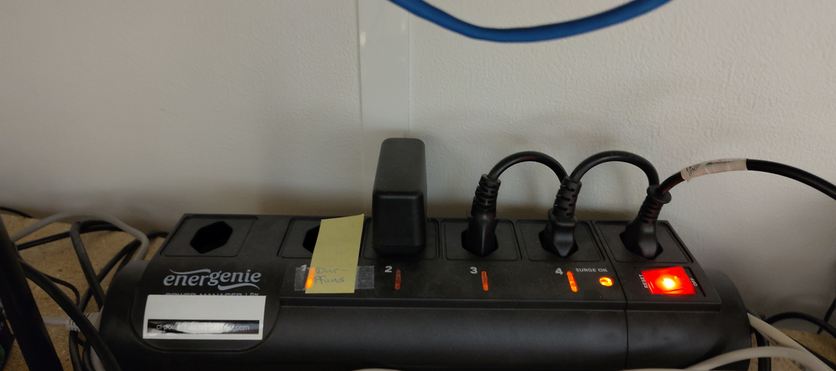
|
|
network controllable power sockets, port 1 is defective
|
These failures were tedious and expensive, and the equipment used a lot of space. Therefore we needed a new solution.
As all of the devices in our test fleet can run on something like 9 to 24 Volts, my idea was to have one single (powerful) power supply of 12 Volts and to switch the low voltage side instead of the 230 Volt side. Also, the specification for the relays should be oversized to be on the safe side regarding the inrush current on power up of devices.
First idea
Our first idea was to use a relay board controlled via RS-485 (Modbus). These can be bought relatively cheaply on E-Bay. We also wanted to use a device running our operating system to control the power delivery.
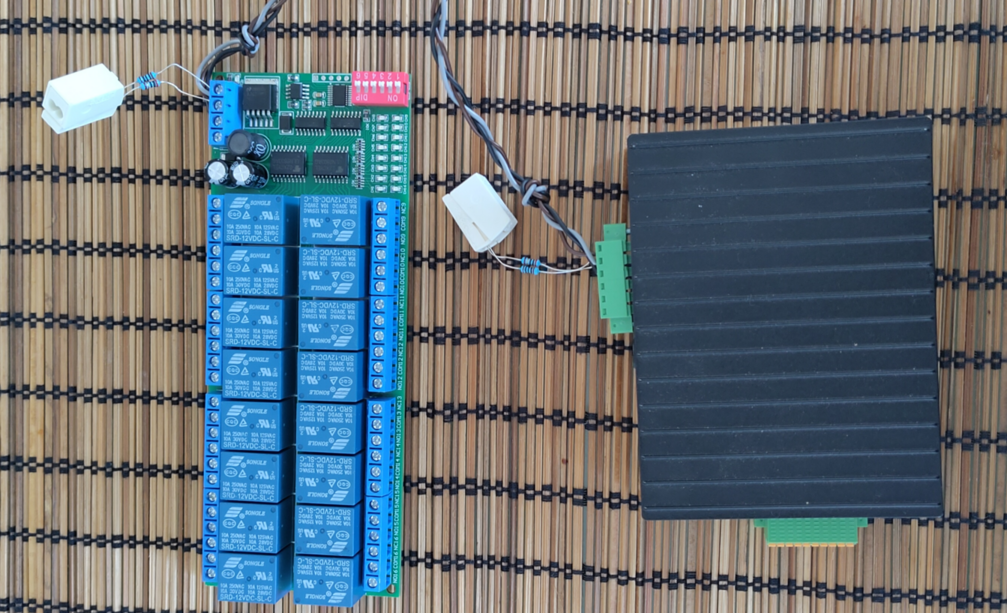
|
|
the relays board and the gateway
|
In my spare time, I started two pet projects: one enabling the UART user-land driver for the iMX8 SoC and the other porting a Python library to control the relays via Modbus to C++. The idea behind this is to use one of our imx8mm IoT gateway devices to control the power of our testing infrastructure. I presented this at Hack'n'Hike 2024, but for different reasons, I haven't made much progress yet.
Speed up because of increased failures
However, we needed a more timely solution as more power sockets stopped working. After some searching we found what we think should solve our headaches regarding dying power sockets. Our current approach uses the Modbus POE ETH relay from Waveshare, which can be controlled via ethernet.
Besides improving reliability, the infrastructure should be clearly arranged and thus easier to maintain. Therefore, we introduced a central hub for power delivery.
-
components mounted to DIN rails
-
all wires hidden
-
easy to understand and expand
-
mounted to a wooden board
The current solution
Below is a simplified schematic of the board for anyone who would like to use a similar setup.
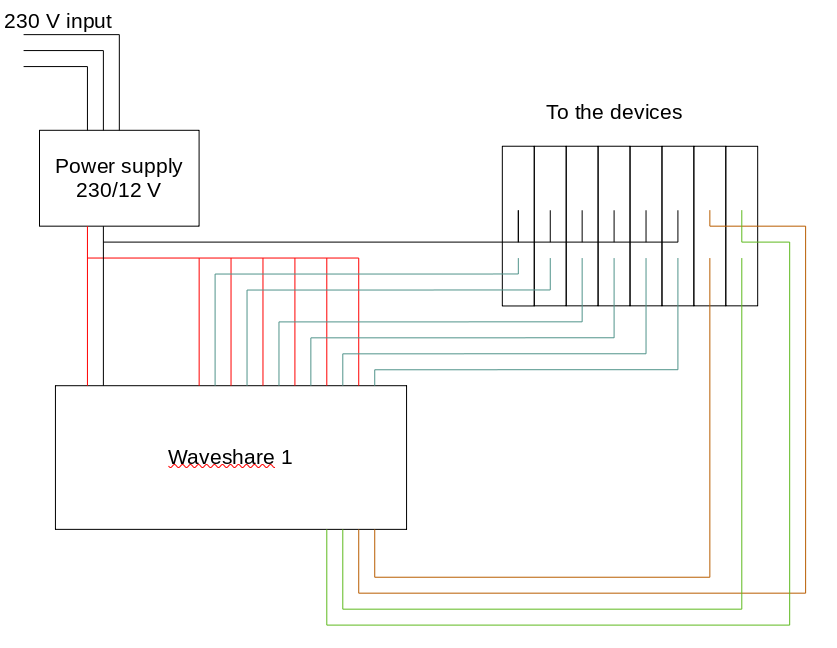
|
|
simplified schematics of the control board
|
-
230V side is connected via an extension cord, this allows to easily disconnect the board for maintenances
-
red is +12V from the power supply
-
black is Ground form the power supply
-
cyan is switched +12V
-
The brown and green lines are two potential free contacts that we need to power on boards that do not support automatically powering on when DC power returns. This could be replaced by two more channels of switched 12V, if there is no need for potential free contacts.
Roman created the necessary run modules to control power on/off with the Waveshare. This can be found at https://github.com/rite/genode/tree/gapfruit-2202-waveshare-power.
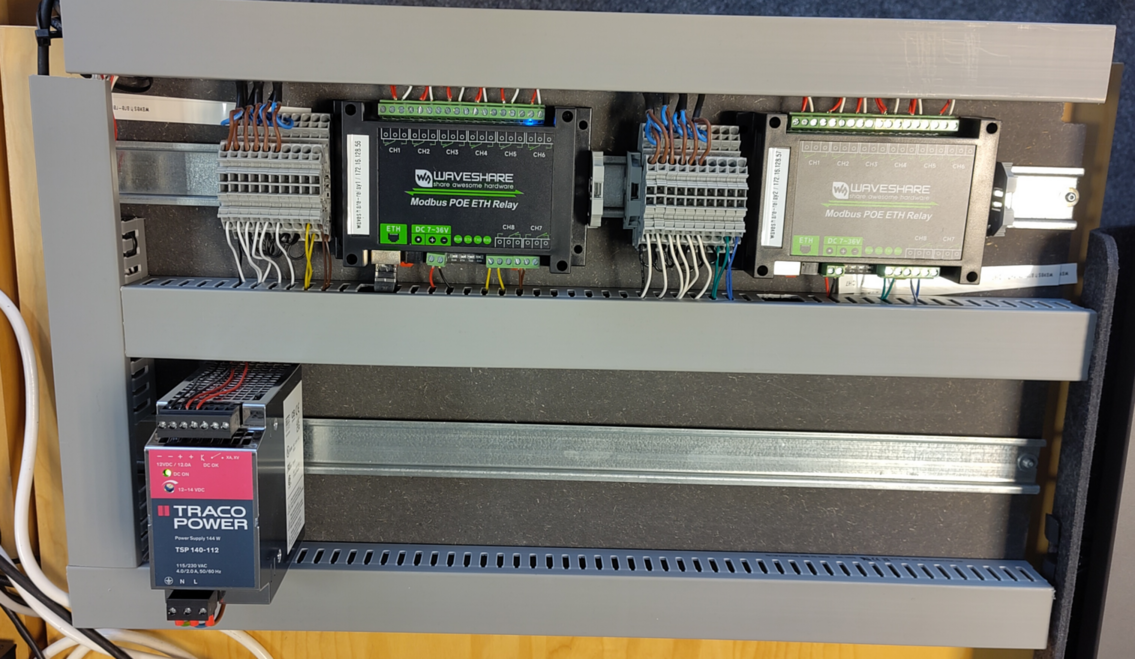
|
|
the assembled board still on the table while testing
|
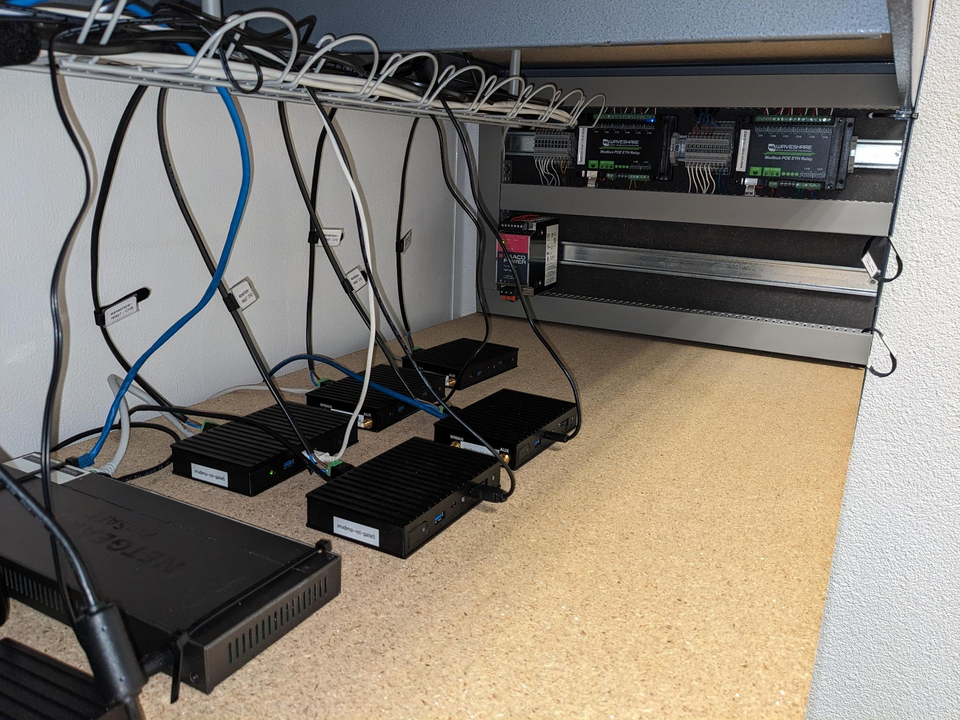
|
|
the whole assembly in action
|
Workflow integration
These run modules can be integrated in to your <build-dir>/etc/build.conf as follows:
BOARD_RUN_OPT(<board-name>) += \
--include power_on/waveshare \
--power-on-waveshare-host <waveshare-ip> \
--power-on-waveshare-port <waveshare-port> \
--power-on-waveshare-channel <waveshare-channel>
BOARD_RUN_OPT(<board-name>) += \
--include power_off/waveshare \
--power-off-waveshare-host <waveshare-ip> \
--power-off-waveshare-port <waveshare-port> \
--power-off-waveshare-channel <waveshare-channel>
To widen the ability to capture the output of the devices we switched from uding picocom to ser2net.
You configure ser2net with the file /etc/ser2net.yaml
connection: <device-connection-name>
accepter: telnet,<ser2net-host-ip>,<desired-port>
enable: on
options:
telnet-brk-on-sync: true
connector: serialdev,
/dev/serial/by-id/<serial-device-id>,
115200n81,local
In the run opts for tool/run/log/serial we thereafter can use following settings:
BOARD_RUN_OPT(<board-name>) += \
--include log/serial \
--log-serial-cmd "netcat <ser2net-host-ip> <desired-port>"
This approach allows a user to look at the log simultaneously as the run script running on the pipeline.
Also, developers do not need a target device on their desk but can use one hosted in the office infrastructure. Of course, this requires some sort of allocation mechanism that ensures a user (be it a developer or the testing pipeline) has exclusive access to the target.
I still want to complete the version with the relays module and the IoT gateway in the future.


 Pirmin Duss
Pirmin Duss